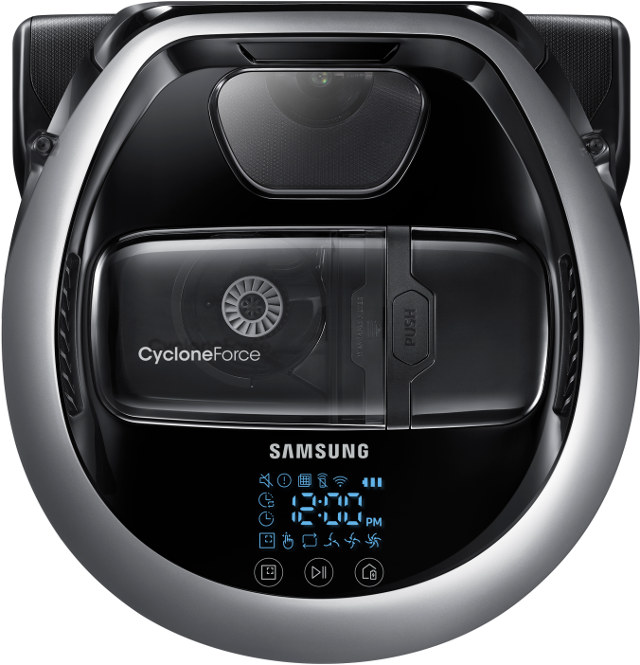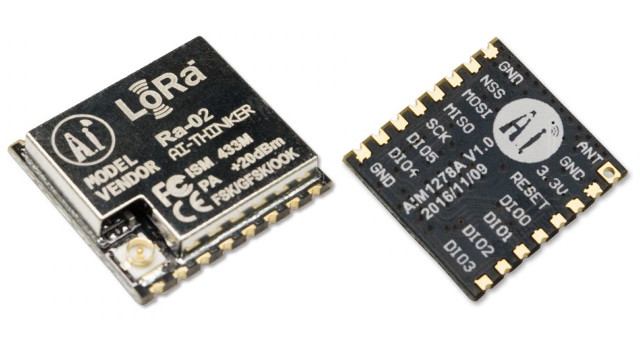Regular readers may remember MQMaker MiQi board, a $35 (and up) development board powered by Rockchip RK3288 quad core ARM Cortex A17 processor, based on Raspberry Pi 3 form factor, but much faster according to benchmarks. Sadly, the board’s crowdfunding campaign was not that successful, possibly because of the “its’ a 2-year old processor” syndrome. But now, Minimachines has found that ASUS has designed a very similar board, dubbed Tinker Board, with an extra WiFi and Bluetooth LE module, audio jack, MIPI DSI connector, and a few other modifications. Asus Tinker Board specifications (bold highlights and strike-through show differences with MiQi board): SoC – Rockchip 3288 quad core ARM Cortex A17 up to 1.8 GHz with Mali-T764 GPU supporting OpenGL ES 1.1/2.0 /3.0, and OpenCL 1.1 System Memory – 2GB LPDDR3, dual channel Storage – 8 or 32 GB eMMC flash + micro SD slot Video output & Display I/F 1x HDMI 2.0 up to 3840×2160@60p […]
$10 RTLDuino is an Arduino Compatible WiFi IoT Board based on Realtek RTL8710AF WiSoC
Last summer, we discovered a cheap RTL8710AF WiFi module with many of the same function as ESP8266, but with an ARM Cortex M3 core instead. The only problem is that it was not quite as easy to play with as ESP8266 boards, as at the time I started by playing with AT commands with B&T RTL00 RTL8710AF module, and later on, I got a more convenient PADI IoT Stamp with breakout board, but if you wanted to change the firmware you had to play with the SDK and a J-Link SWD debugger. Realtek RTL8710AF did not offer the convenience of Arduino IDE program like its big brother “RTL8195AM” from the same Ameba family. I know mbed is being worked on, but in the meantime things have changed for the better, as kissste informed me that RtlDuino implementation added Arduino support to RTL8710AF and RTL8711AM modules, and an NodeMCU-like board with […]
ESP32-WROVER-KIT Devkit Supports Espressif ESP32 Modules, Includes a 3.2″ LCD Display
Yesterday Olimex wrote a blog post informing us that ESP32-CoreBoard was back in stock, one the many ESP32 boards launched late this year, but still hard to get. The company also mentioned they’d have limited quantity of the new ESP32-WROVER with JTAG and LCD display together with the picture below. ESP32 is quite more powerful than ESP8266 so it makes sense to have an ESP32 development kit with an LCD display. A quick DuckDuckGo search led me to ESP-WROVER-KIT Getting Started Guide, where we can find more details including the overall specifications: Compatible with ESP-WROOM-32 and ESP32-WROVER modules based on ESP32 dual core Tensilica L108 processor clocked at up to 240 MHz with WiFi and Bluetooth LE connectivity Storage – Micro SD slot Display – 3.2″ LCD display connected via SPI USB – 1x micro USB port Expansion 8-pin UART header 6-pin SPI header 48-pin header for I/Os and camera […]
Samsung Introduces IoT-Ready POWERbot VR7000 Robot Vacuum Cleaner Compatible with Amazon Echo
2017 is the year where the future starts. You’ll be wandering in your automated home or office where lights and heating system are fully handled by a gateway taking into account sensors values, and equipped with a CO2 level controlled ventilation systems, your eyes constantly looking at your phone, wearing neckband speakers likely connected to your Amazon Echo to let you know when it’s time to get up, eat, go to work, brush your teeth, and get back to bed again. All your life will be taken care of on your behalf by the Internet of Things, relieving you of the stress of taking routine daily decisions… Luckily, you’ll still be have an illusion of control thanks to your “IoT-ready” Samsung POWERbot VR7000 vacuum cleaner that can be controlled with your voice via that Echo thing, giving your life a purpose. Samsung Electronics’ latest POWERbot vacuum cleaner will be unveiled […]
433/868/915 MHz LoRa Modules Are Now Selling for $6 and Up
Market forecasts for the Internet of Things promise billions of connected device in the years to come, but this won’t happen when LPWAN connector sensors cost $50 or more, so prices will have to come down. I’ve been told that one company is working on a WiFi + LoRa module that’s going to sell for $5 to $6 sometimes in 2017, but in the meantime, it’s possible to get some LoRa modules for less than $10, albeit limited to 433 MHz frequency not the more common 868 MHz (EU) and 915 MHz (US), thanks to products such as AI-Thinker Ra-02 module. Ra-02 specifications: Chipset – Semtech SX1278 low power long range transceiver Radio 433MHz frequency (420 to 450 MHz range) +20dBm – 10mW constant RF output vs. V supply; up to 300 kbps bitrate Supports FSK, GFSK, MSK, GMSK, LoRa and OOK Modulation Mode 127dB RSSI wave range. I/Os – […]
vThings WiFi CO2 Monitor Quick Start Guide
I’ve already checked out vThings CO2 Monitor hardware and we’ve seen it’s based on ESPrino ESP8266 board, and my model includes CM1106 CO2 sensor and BMP180 temperature and pressure sensor. I’ve now installed it in my kitchen, about 3 to 4 meters from the gas stove, and getting data to ThingSpeak. The door and window of my kitchen are open all day, and the wall have ventilation holes. That’s important for CM1106 sensor since it auto calibrates every 3 days in clear air. If you plan to use such sensor in a closed environment, you should buy Vthings with CM1102 CO2 sensor that costs more, but does not require calibration. Since all WiFi systems I’ve just so far starting AP mode for configuration, I first looked for an access point, but… nothing… Then I decided to read the documentation (might be useful at times), and the monitor is actually configured […]
Batteryless, Urine Powered Smart Diapers Notify You When It’s Time to Change Them
One of the downside with current smart wearables is that most need to be recharged quite often, every day, week or month, and we’re still a long way of 10 year battery life offered by typical watches. I’m hopefully that eventually many devices won’t need to be recharged at all as we’ll have made improvements both in terms of power efficiency and energy harvesting using solar, body heat, vibrations and other techniques. Takakuni Douseki, professor at the Department of Electronic and Computer Engineering of Ritsumeikan University, has been working on micro energy harvesting, and his latest “wireless involuntary urination sensor system” notifies the user when it’s time change the diapers without the need of any battery, instead using energy generated by urine and stored in a capacitor in order to transmit the data wirelessly. The prototype is using a modified baby diaper with a 320x5mm activated carbon piece, and a […]
ESP8266 based Wireless Air Quality & Environmental Monitors Teardown – Sonoff SC and vThings CO2 Monitor
The mailman delivered two parcels today, and interestingly enough they have a similar functionality measuring air quality and environmental data such as temperature. The first package was ITEAD Studio Sonoff SC environmental sensor with ESP8266, an Atmel MCU, DHT11 temperature & humidity sensor, a dust detector, a light sensor, and a microphone, while the second was v-Air Monitor vThings CO2 monitor v3 also based on ESP8266 with a CO2 sensor and other optional sensors. I’ll test both with their stock firmware later on, but today I’ll have a look at the hardware design. v-Air Monitor vThings CO2 monitor specifications While I’ve already written about Sonoff SC, it’s the first time I cover v.Air Monitor products, so let’s start with the specifications of vThings CO2 Monitor v3: SoC – Espressif ESP8266 WiSoC Connectivity 802.11 b/g/n WiFi Optional RF315 / 433 MHz RF module Sensors CO2 Sensor (one of them) CM1106 NDIR […]










